Anno 1701 The Sunken Dragon Review | City Builder Game (text version)
Good mornin-afternoo-vening dear viewers and welcome to Anno 1701 The Sunken Dragon. As you might have noticed, I’ve been spending the past several weeks playing almost exclusively turn based tactics games and I needed a bit of a break. So what other better genre to jump back into than the city builder.
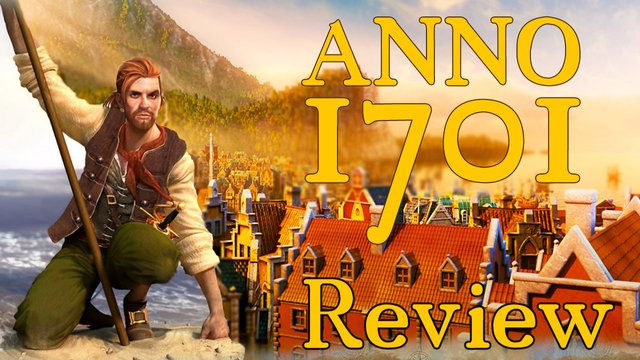
Now, despite the rather long history of Anno titles, which by the way, if they stay on schedule with this year’s planned release of Anno 1800, the series will have been going for twenty years. So despite this 20-year old history, much like the Settlers situation, I had never played any game in the Anno series up until now. Alas, I can’t play all the games, unfortunately, I’m trying though. Anyway, once my city builder passion reignited I decided that there’s no better time to give the Anno titles a try than the present. So when I saw this title on sale on GOG awhile back, I bought it and saved it for later and now that I’ve played it, allow me to tell you all about it.
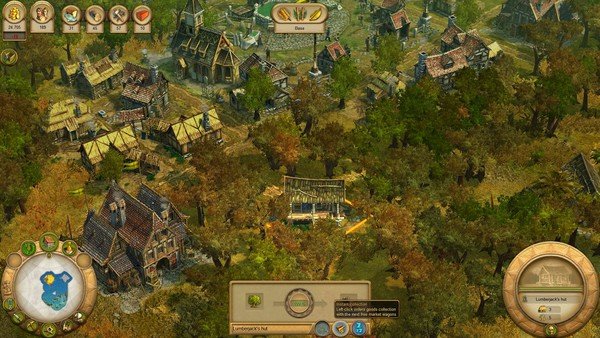
Graphics and sound
I have to start by saying that Anno 1701 The Sunken Dragon does its theme very well. If you watched my Banished review, I mentioned that one of the game’s major flaws - at least in my opinion - was the lack of a theme, and that’s very important for me when playing a city builder title. Of course, really cool and interesting gameplay mechanics will win the day, but having them wrapped up in a nice theme makes the game that much more enjoyable in my book.
And Anno 1701 definitely knows how to do its 18th century aesthetic theme right. It’s not going for a truly realistic approach, instead choosing a stylized aesthetic, making use of bright colors and very expressive animations when it comes to the talking heads that you’ll be seeing and hearing throughout the game.
There are various levels of development that your settlements will have to go through in order to grow. Each of these levels is represented by different-looking houses, the higher level your population is, the taller and prettier the house buildings get and also, the overall level of development is illustrated in the sumptuousness of your town square. The square will also be the first place that you’ll see the effects of your citizens’ morale, but more on those mechanics a bit later.
The sounds and music are quite solid as well, they do a great job at supporting the atmosphere of island colonies. The talking heads tend to get a bit repetitive during a custom game but that’s not that big of a problem, I think.
While both the graphics and sounds of the game are quite great, they’re not the thing that stands out. Not even the mechanics, they are pretty good city builder mechanics, what really stands out is the campaign.
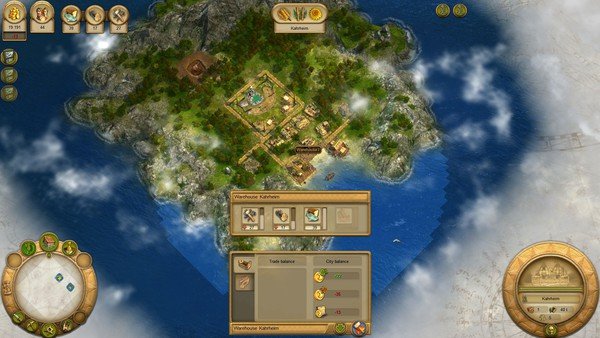
The Sunken Dragon Campaign
The game’s campaign is something truly special. First of all, the game has one to begin with, which is something that hasn’t really been that big of a thing in recent years. Which, on the one hand, is somewhat understandable, considering that most, if not all, new city builder games are indie productions and they tend to focus on enhancing the city building and managing mechanics and less so on any sort of narrative - on the other hand, it doesn’t mean that we should get used to campaigns completely lacking from all city builder games going forward.
Secondly, even when compared with past city builders, the campaign missions don’t take the traditional route of you having to reach a certain number of population, level of civilization, surviving for a period of time or reach a certain point on the map. Instead, Anno 1701’s Sunken Dragon campaign starts up with you having to do all sorts of non-standard things, such as producing whale oil in order to supply an altar to a local Fire God so that the storms on the sea subside. You need the storms to subside so you can then use the diving bell built by an inventor you had to hire with alcohol, to explore several spots looking for the Eye of the Dragon artifact. That’s just a very quick description of the very first mission in the campaign and the campaign has a bunch more where that came from. Then there’s another super interesting mission in which you’re given quite a large settlement, early on, and you’re tasked with fixing its production and supply problems, by demolishing certain buildings and replacing them with more appropriate ones, work which you have to do in order to reach the mission goal.
Now, I don’t know if this campaign is typical of the Anno games, because like I said in the beginning, this has been the first Anno title I have played, but the campaign of Anno 1701 The Sunken Dragon should be studied by current developers, be mined for what it does well and implement those conclusions into their future city builder titles because very rarely have I really cared about a city builder’s campaign as much as I did for this one because I was constantly interested in what the next mission had to offer.
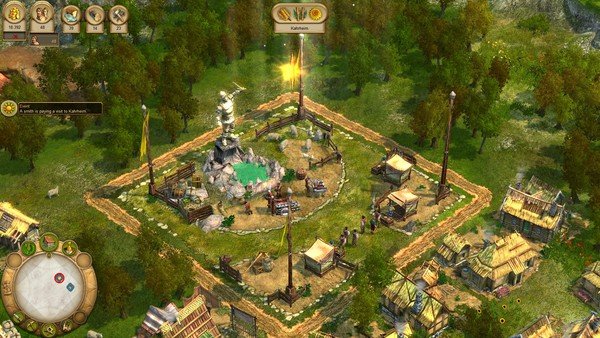
City building and accounting
A big part of the game is managing your income and expenditures, because there will be several times during the game when you’ll have to work with a deficit. The way to balance this out is to not really expand unless you need it and to shut down production buildings once you’ve reached either your maximum storage or a high enough number of whatever it is they’re producing. Usually once you reach a storage maximum the normal gaming reflex would be to increase that max, and while that makes sense in certain cases, in some of them it doesn’t because it only means that you’ll continue to function at a deficit even though you aren’t really using up the resources that you are producing to begin with, so that’s a good moment to step down production or shut it down altogether for awhile. Obviously this isn’t a valid strategy if you can sell your excess resources, in which case you wouldn’t be at a deficit to begin with, but that will depend on the map and/or mission.
The game does do some interesting things in terms of how it deals with resource gathering. The first interesting thing to note is that all the warehouses on each island will access a shared pool of resources. So if you have a warehouse on one side of the island that’s in charge of gathering food, a warehouse on the opposite side of the island will have access to the same number of food since every resource collected on any one island is pooled together and all warehouses have access to this common pool.
One cool little thing relating to how some resources work is that some raw materials don’t actually have to be sent to the warehouse in order for them to be further processed into usable resources. In order to use the raw materials you’ll need a different building which will fetch the raw materials automatically and only send the finished product to the warehouse. It’s a nice little touch when it comes to the usual city builder logistics chain.
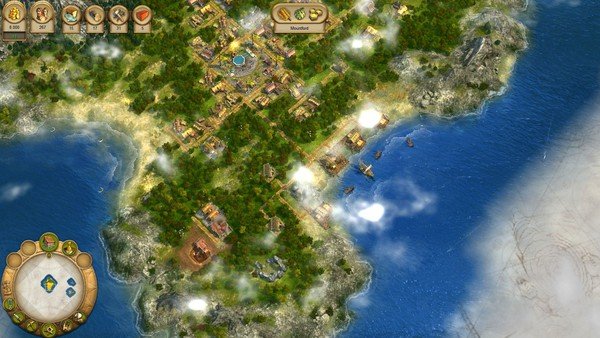
Warehouses can only house a limited number of each resource, but building more warehouses will increase that cap. Upgrading the warehouses will do the same thing - once the upgrade is available - but will also increase the number of carts that your warehouse can send to get resources. You can have many resource producing buildings linked to a warehouse via roads, but if that warehouse has only one cart, your resources might stockpile in the producing building, which is something you want to avoid because that stops them from making stuff.
So I mentioned usable resources earlier, by which I mean, usable by your population. See, in order for your population to develop they’ll need a steady supply of a variety of resources. Each level of population has new resource requirements which have to be supplied in order for them to be happy and hence allow you to advance to the next level of development.
Population-related mechanics
While you might become laser-focused on upgrading your population level, there’s something that you need to keep in mind. Once your population gets upgraded they’ll have new resource requirements in order to upgrade further, but keep in mind that you’ll need to constantly increase your population as well. This means that you’ll have to also constantly keep an eye on the resources that your population has been using until that moment, because production of those will have to increase as well in order to keep up with your population growth.
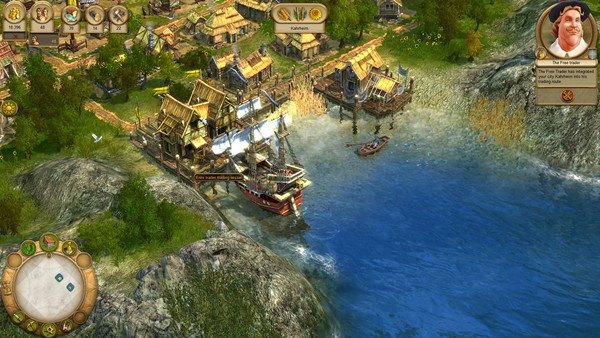
Your people’s happiness is crucial to them improving your settlement’s level. In order for this to happen, their resource requirements have to be met 100%, their taxing level has to be in the bright green, and their houses have to be fully populated. That last part happens once the first two requirements are met.
Taxation is a thing that you’ll need to keep an eye on and constantly fiddle with. There will be times where you should keep it as high as possible, because you’ll need the money, but make sure it never gets into the red because that’s when the people riot and start burning things. Also in order for your population to advance the taxation has to be in the bright green section of the taxation bar, but even that has a maximum and a minimum so keep them on a short leash, is what I’m saying, taxation wise.
Roads
Let’s talk a bit about the roads in this one, because this is a city builder title, so I must address the roads mechanic.
Iiiit’s not great. You can place the roads basically wherever you can place buildings, but my issue with it is that you can’t change your mind, destroy them and rebuild them in a different pattern.
This makes pre-planning your settlement that much more important and means that you’ll only get a hang of it once you play it for awhile since you can’t change your town’s road layout as things progress.
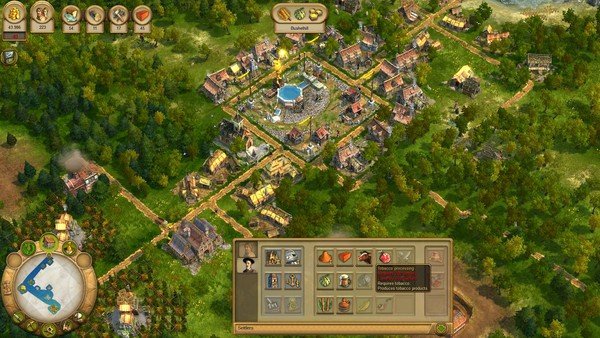
And the situations do progress in the sense that, you need to constantly increase your population number, which means they will need more support buildings and more resources in order for them to not burn down your shit. And unfortunately the road-building mechanics don’t really allow you to go with the flow. Once you’ve built them they’re there to stay, even though you can always destroy the buildings, you can never destroy the roads, huh, weird choice.
Shipping empire
So, roads are crucial to developing your settlements, but you can never have all the resources you need on any one island, regardless how large the island is. The largest islands will have only three slots for resources that can be produced on it, and these resources are randomly generated, so you’ll need to expand to other islands which do have the resources that you’re lacking initially. Thankfully, the game takes place on maps populated with islands, and as such, ships play a pretty large role in the health, defense and overall development of your settlement.
So one of the extra layers of strategy that the game has is the fact that you will not only have to expand on other islands in order to gain access to new resources but that you’ll also need to build ships and set up shipping routes so that they can move the resources around to where they’re needed. While the number of shipping routes you can have is limited, you can daisy-chain several stops on each of them, so you could have a ship visiting one or more destinations to pick-up resources and then have them brought back to where you can process them. This approach won’t be most time-efficient though, so direct shipping routes make the most sense, however building the ships is expensive and then maintaining them also tends to add up, so it’s as usual, a balancing act that has to happen depending on the circumstances of each map.
Combat
You can build a variety of ships, some of them exclusively for moving resources around, some of them for exploration and some of them for war. The latter two being the ones outfitted with a varying number of cannons, not cats.
The game does indeed also feature a bit of naval combat, because you won’t be the only one on the map looking to build a thriving settlement, you’ll have some competition, and sometimes this competition can get hostile.
Combat in general isn’t a large part of the game and as such there isn’t a lot of strategy or tactics to it, it mostly amounts to whoever has more or better ships, wins. There is also a bit of ground combat, but again, nothing detailed, just some terrestrial units which you can land on hostile islands to destroy the enemy’s production facilities, that is if they don’t have their own terrestrial troops to repel your invaders. Whoever has more or better equipped troops will usually win.
Speed settings
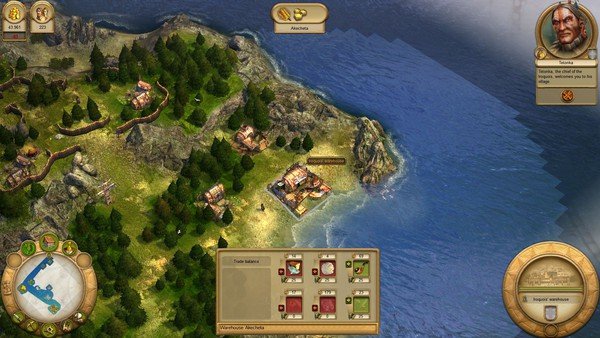
The game unfortunately has no active pause, nor a very slow speed setting, kindof a bit of a bitch because you can, and will, definitely place buildings where you didn’t want them and you’ll have to then demolish them and hence waste a bunch of resources, so take your time when building your settlement. I’m guessing active pause in city builders became a thing much later in their development because nowadays it’s something of a pre-requisite sort of feature. Thankfully there is a Turbo speed option, so you’re either on normal or Turbo, and this helps shorten the amount of real world time you spend with the game.
And apropos of this, Anno is the first game - at least the first one I played - that lets you know how long you’ve been playing at each hour interval. It’s a nice little touch that I enjoyed because city-builders especially are notorious for being motherfucking time-vampires, and at least this one tells you how long it’s been sucking out your time. I approve.
Anno 1701 The Sunken Dragon is a pretty solid city building experience, which adds the extra layer of setting up shipping routes and the lite-ish combat mechanics. Like I said in the beginning, I have no idea how the other Anno titles compare to this one - although you can check out the Anno 1404 video my friends from GamingHD made, link in the description to their video - but I can tell you that this one, Anno 1701 The Sunken Dragon is definitely worth your money, especially if you get it during a GOG sale.
And that wraps it up for my rather long and I hope informative Anno 1701 The Sunken Dragon review. Leave me a comment with some other city-builder titles I should play in the future, or if I should try out some of the other Anno titles. Thank you for watching, be kind subscribe. Seeya next time.
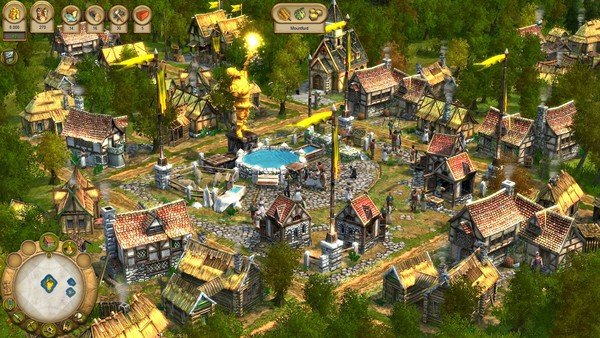
Don’t forget to upvote, resteem, comment and follow!
…
You can find me in these places as well:
YouTube: youtube.com/user/CNonsense/featured
dTube: d.tube/#!/c/stefanonsense
Twitter: twitter.com/StefaNonsense
Facebook: facebook.com/CNonsense
Instagram: instagram.com/stefanonsense
Join me on my friends' GaminGHD Discord Server discord.gg/CZSXJwy
Gaming-Related Friends you should follow: @free999enigma @unacomn @gaminghd @ropname @vladalexan
Your post was upvoted by the @archdruid gaming curation team in partnership with @curie to support spreading the rewards to great content. Join the Archdruid Gaming Community at https://discord.gg/nAUkxws. Good Game, Well Played!
I loved anno and simcity in my childhood. It was so much fun to build up your own city.
Hi stefanonsense
**LEARN MORE:** Join Curie on Discord chat and check the pinned notes (pushpin icon, upper right) for Curie Whitepaper, FAQ and most recent guidelines.